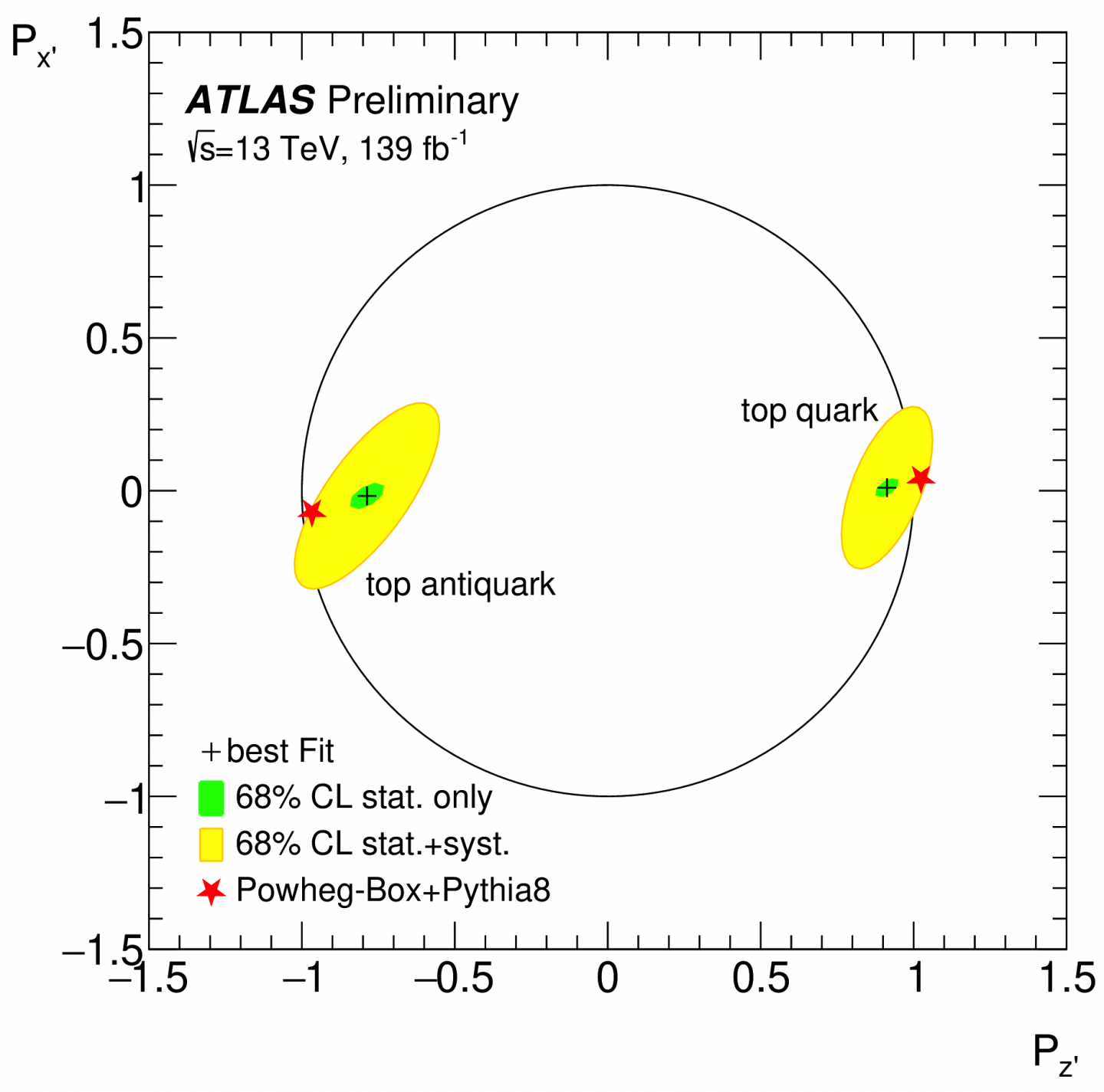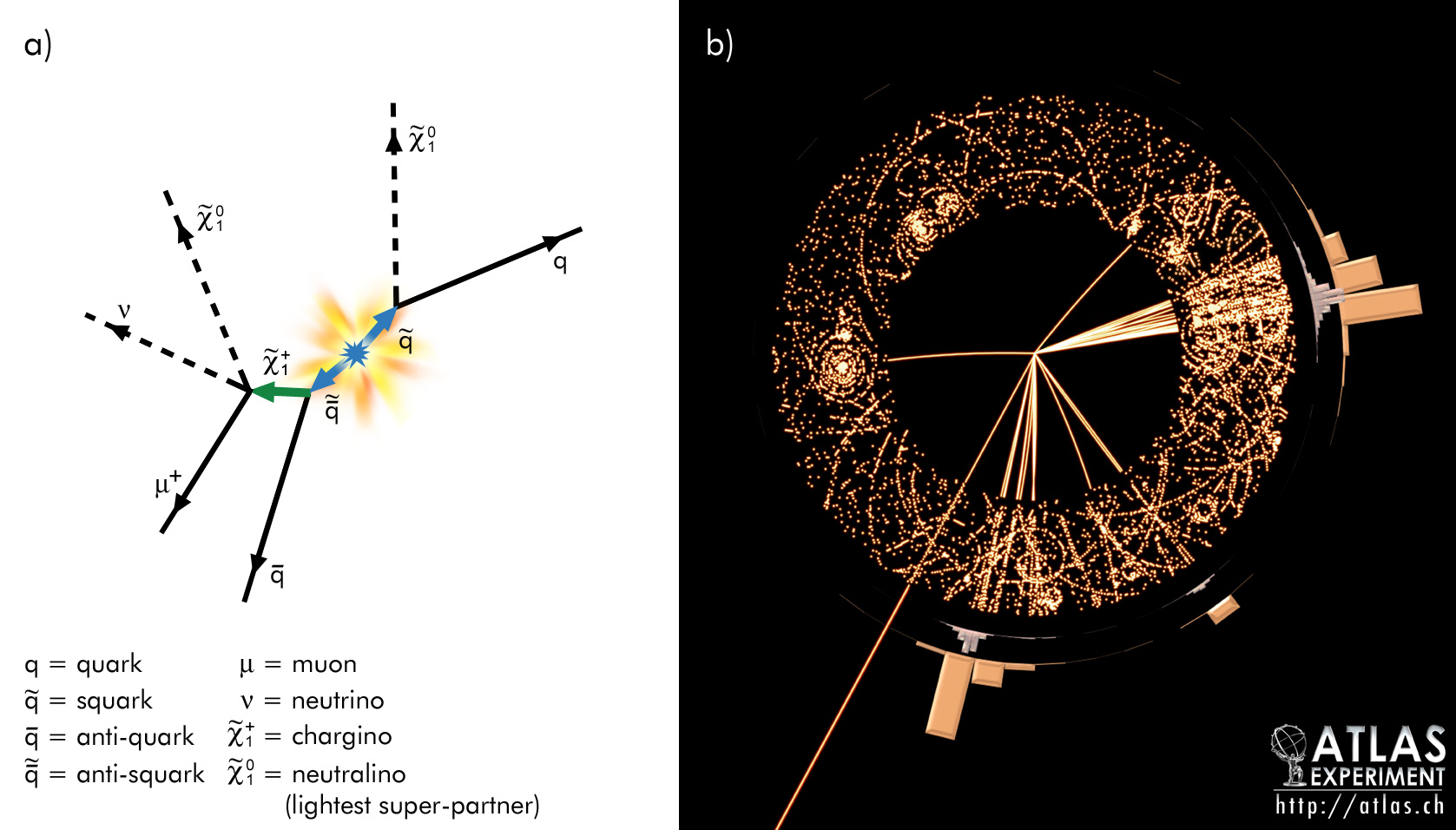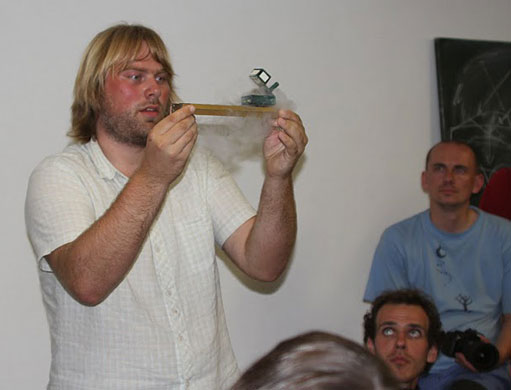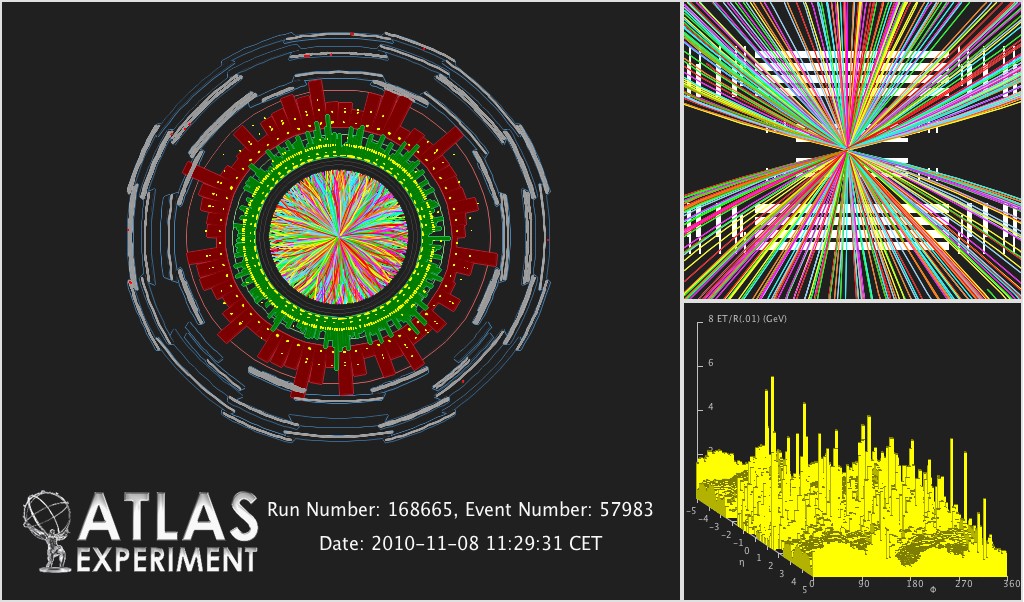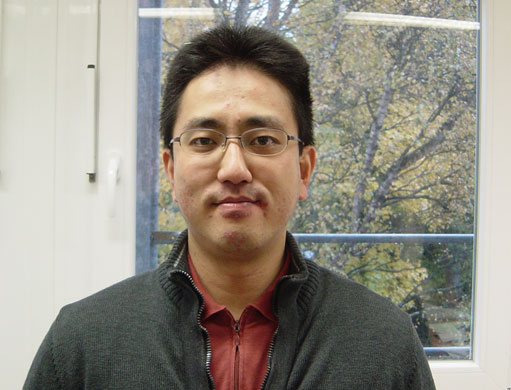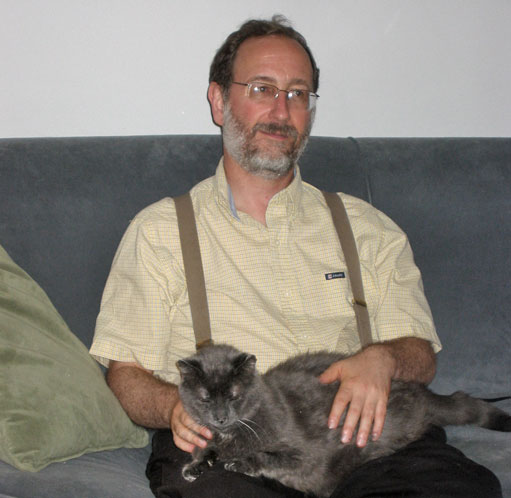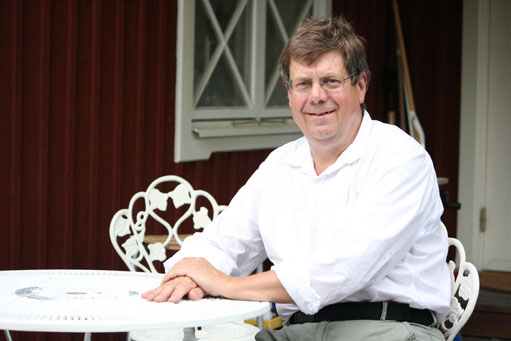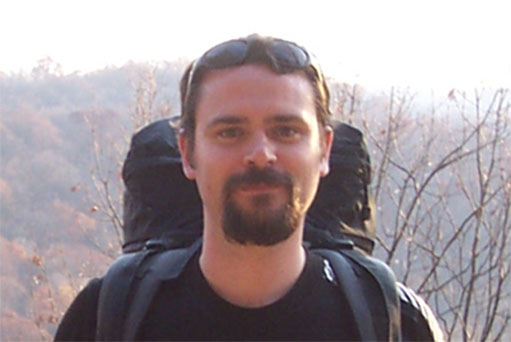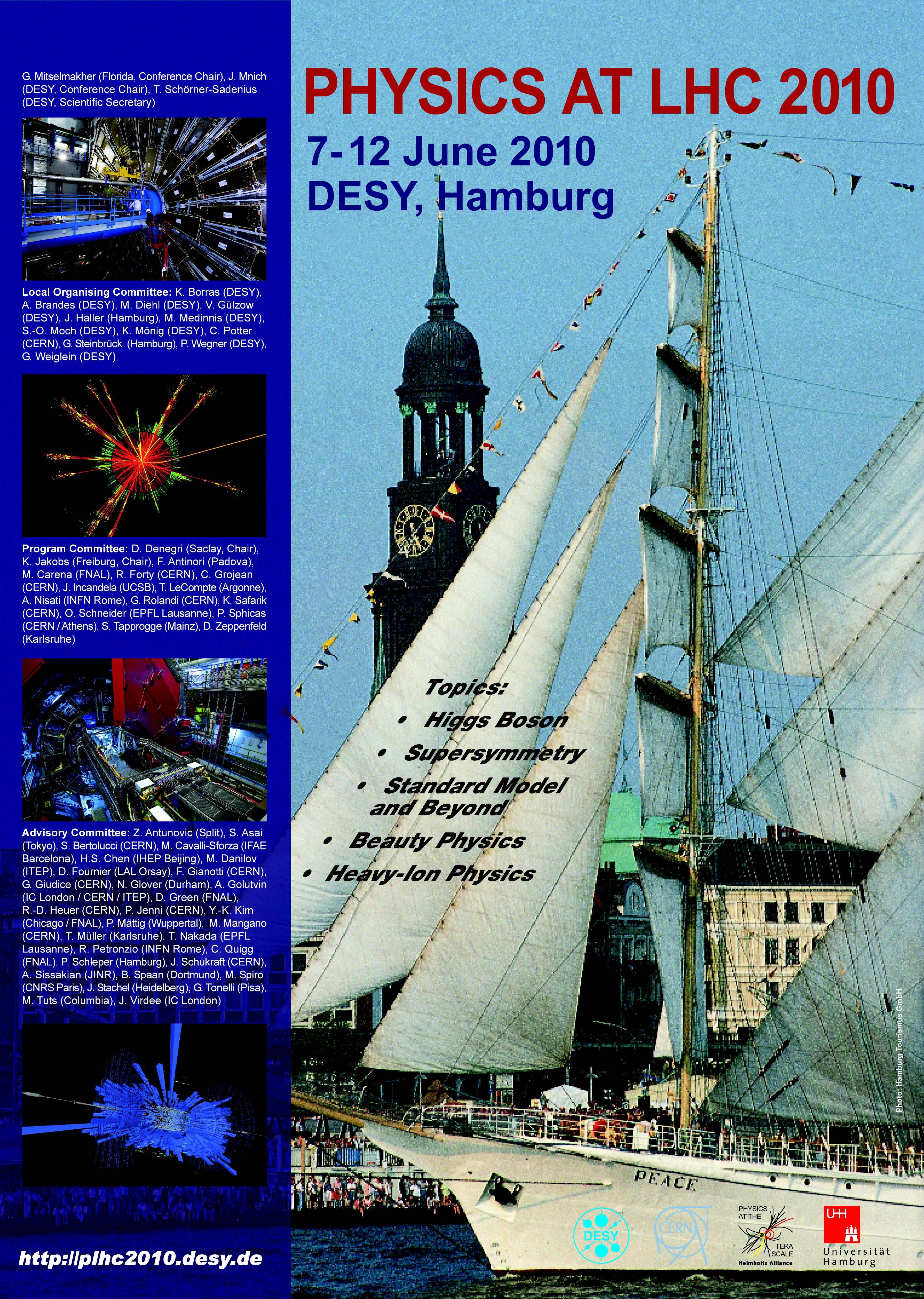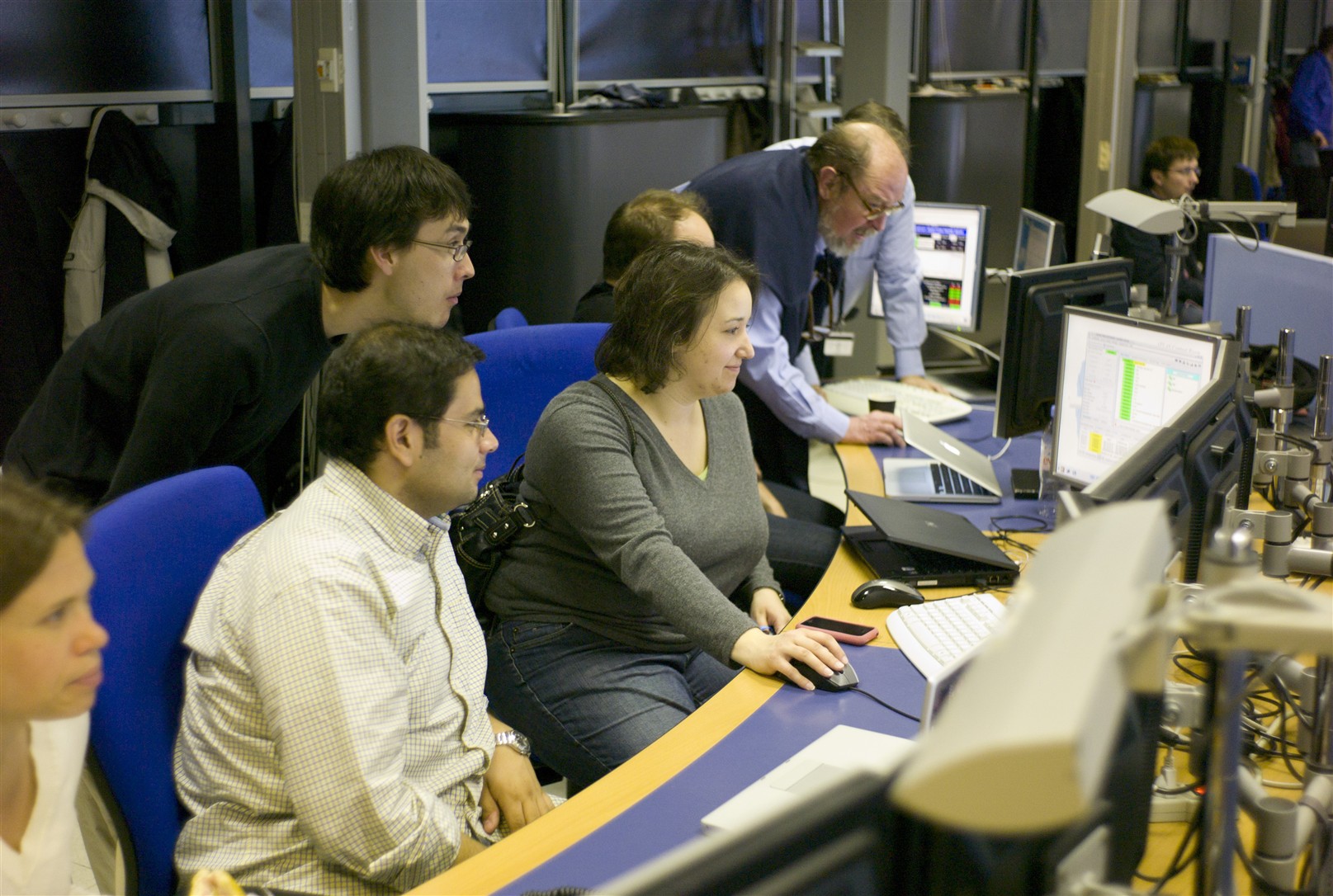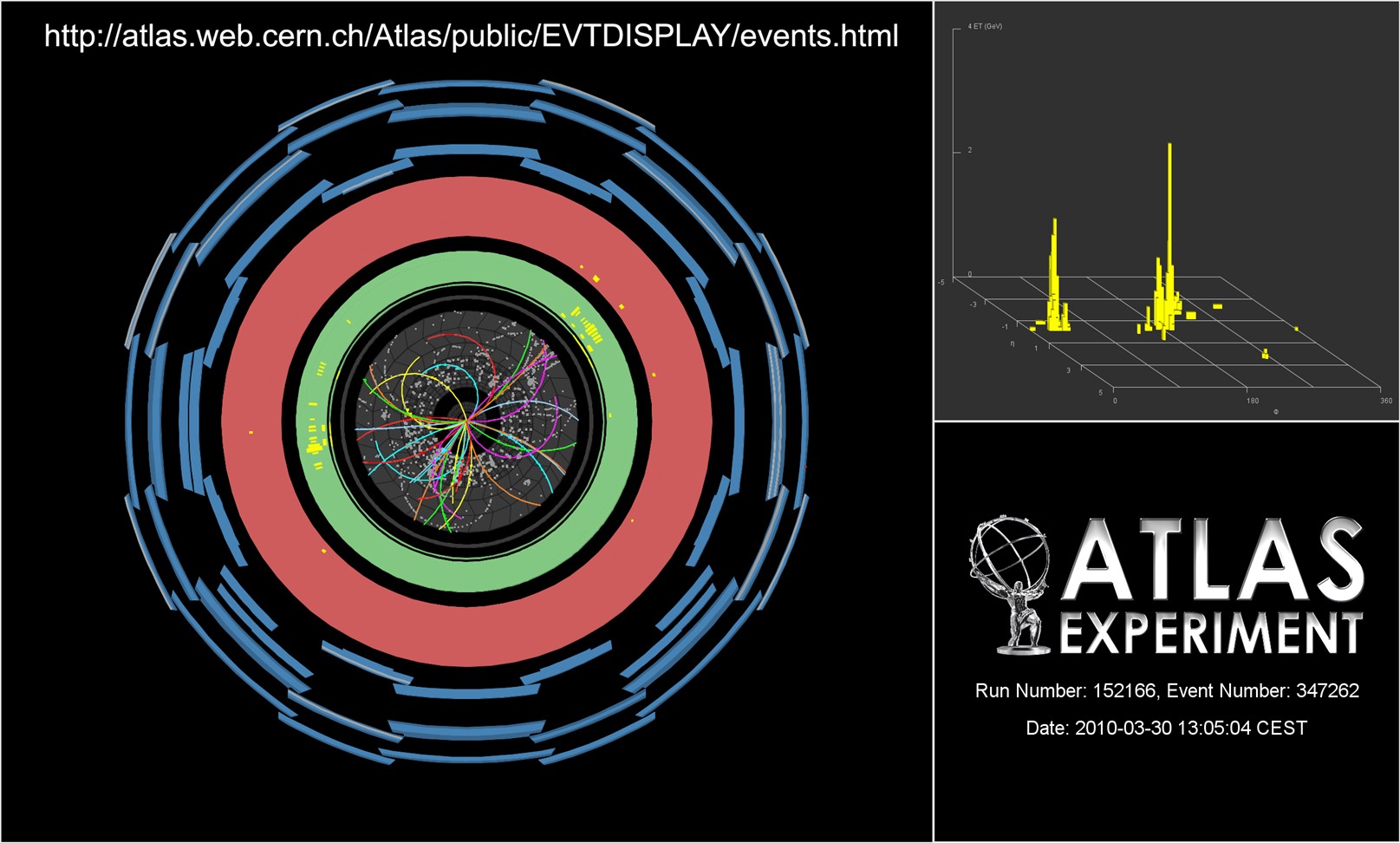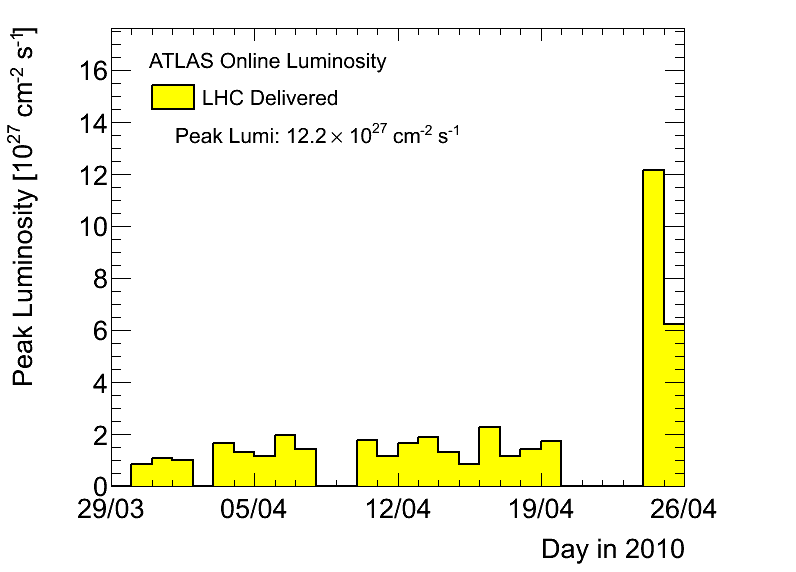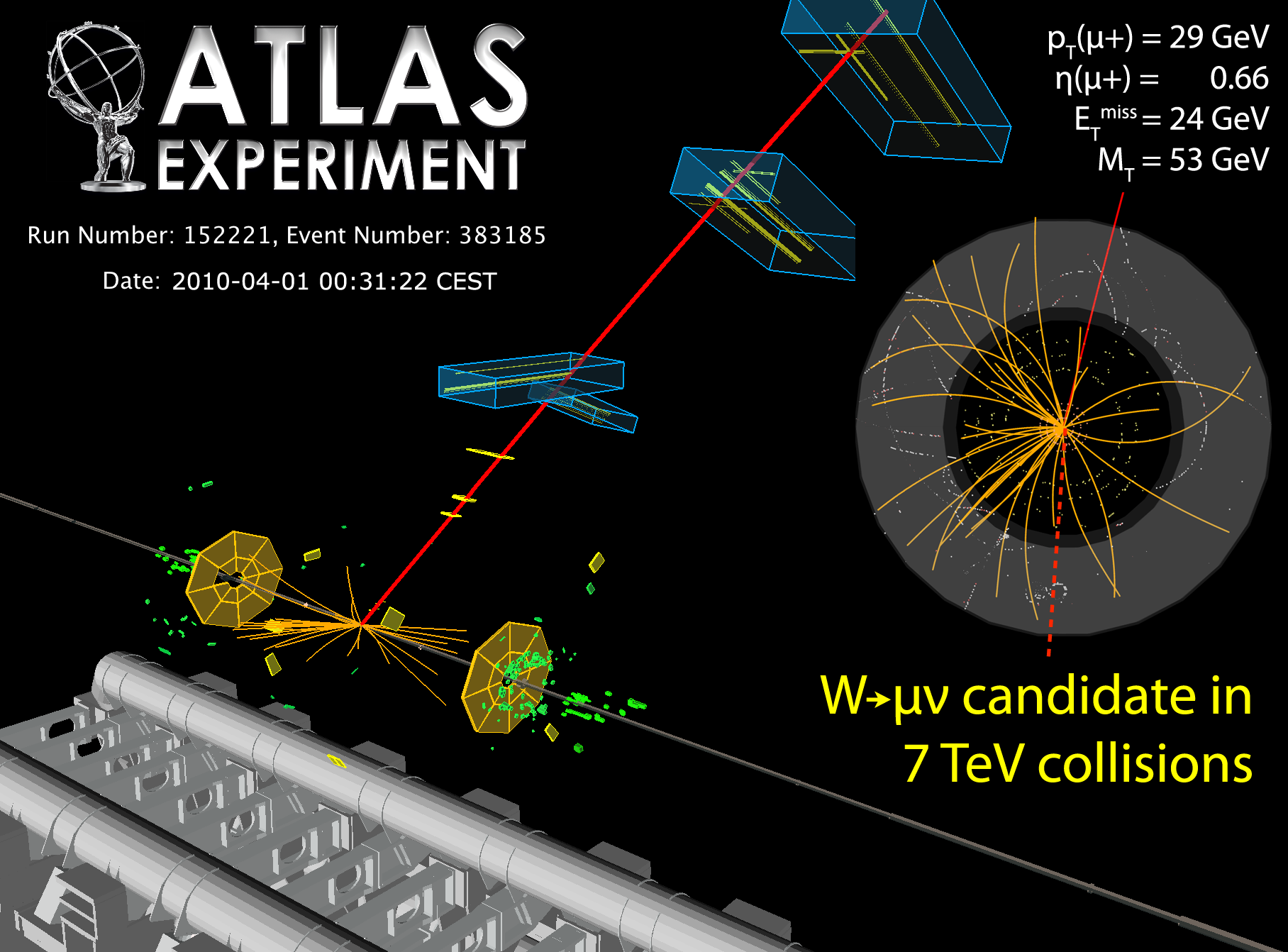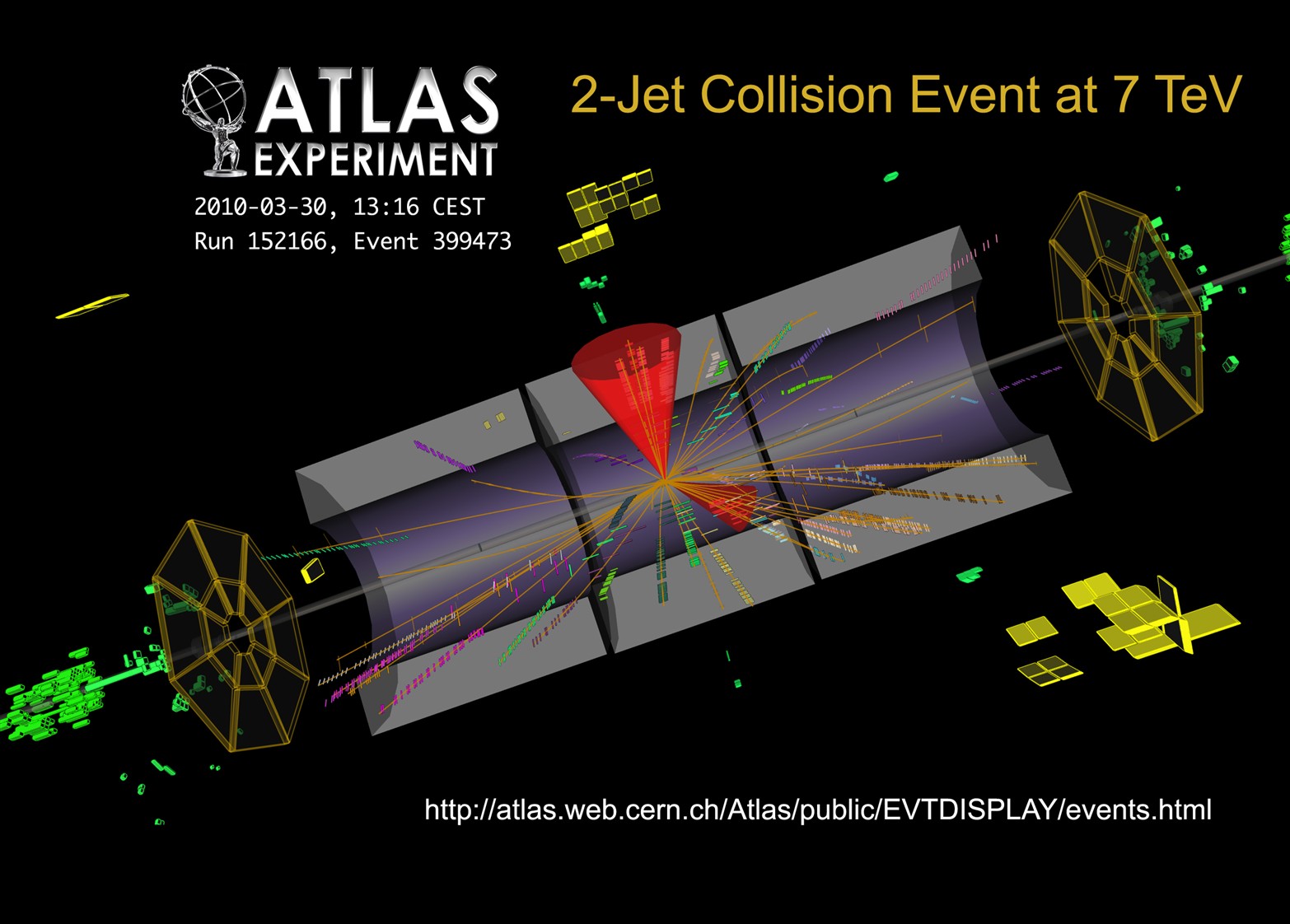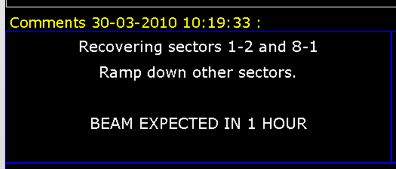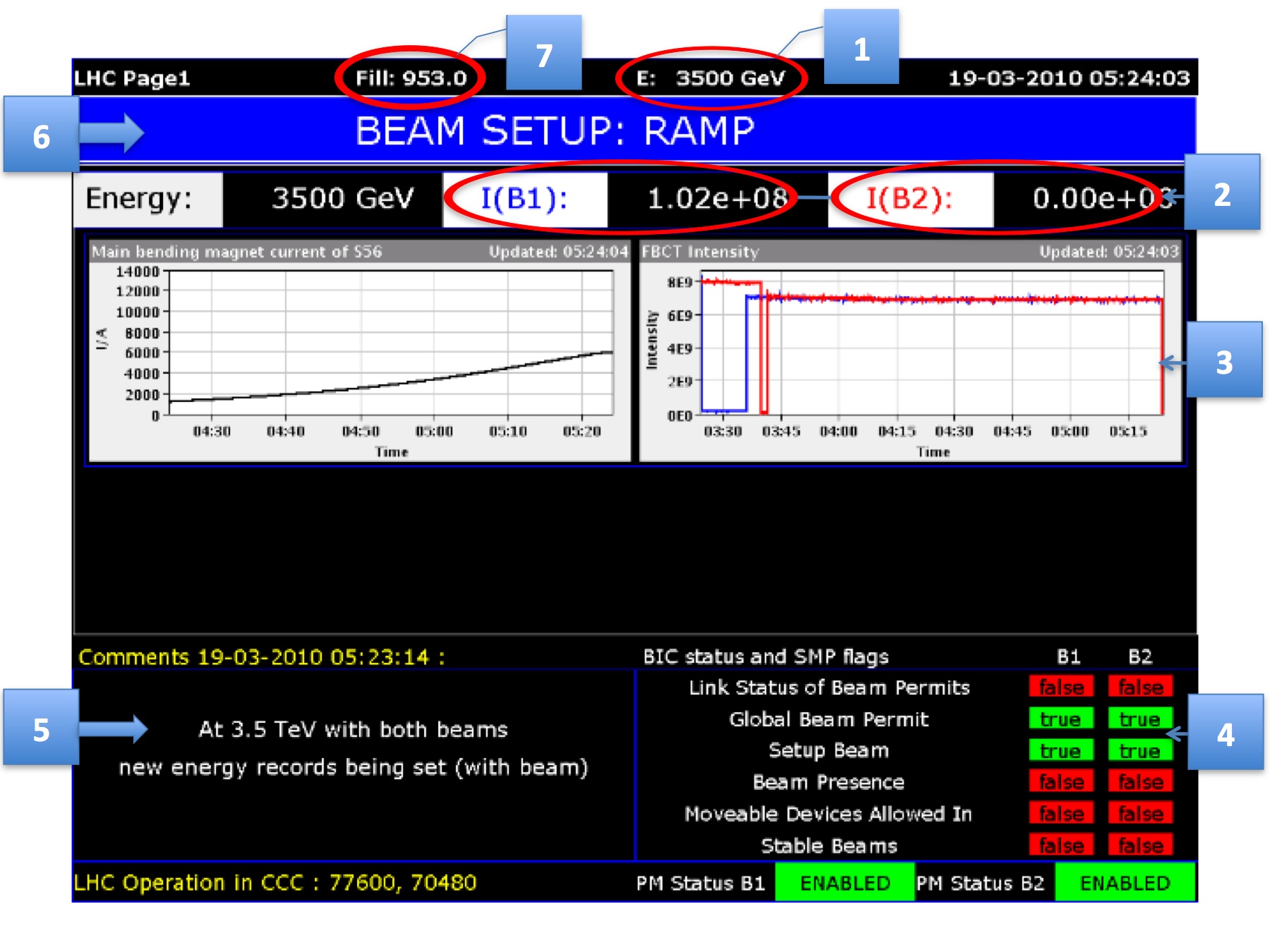The hunt for higgsinos reaches new limits
Physics Briefing | 10th June 2021
Is Nature Supersymmetric?
String Theory predicts a new symmetry, called "supersymmetry", that could shed light on some of today's mysteries of fundamental particles and interactions. In supersymmetry, every particle-type should have a "shadow" particle called a super-partner that (in general) has a much higher mass. The ATLAS Experiment has analyzed the first year of its LHC data and searched for evidence of these super-partners of ordinary matter.
News | 24 May 2011
Martin Rybar
There is usually a defining moment, or event, that leads a person to science. For 10 year old Martin Rybar, it was the moment when he found the chemistry laboratory kit from his uncle in his parents' house. Curiosity has always been the main driving force in science – and Martin was no exception.
Profile | 15 Dec 2010
Takanori Kono
There are many paths into science and one that might have played a key role for Takanori Kono could be LEGO bricks. Maybe it is the segmented approach learned from playing with those bricks that helped him later on tackle computer programming. It is easier to break down any problem into smaller chunks, seeing how it is put together as though it were made from basic building blocks.
Profile | 01 Nov 2010
Frederick Luehring
“That's one small step for man, one giant leap for mankind,” we all remember Neil Armstrong saying while taking his first steps on the moon. As so many, Fred Luehring was glued to the television set that 21st of June, 1969, but to him this event meant much more than to most.
Profile | 04 Oct 2010
The inverse picobarn threshold has been crossed in ATLAS!
Another milestone has been passed in the long run of ATLAS toward new physics. On Monday August 9, 2010 ATLAS has recorded the first inverse picobarn (pb-1) of 7 TeV collisions. The trend is good and we recently reached the 0.1 pb-1 per day of integrated luminosity (meaning that we can now collect in ~10 days the amount of data we have collected over the last 4 months).
Blog | 10 Aug 2010
Bengt Lund-Jensen
“In Sweden you can go out dancing in the summertime, where they play popular music but adapted for dancing,” says Stockholm native Bengt Lund-Jensen. Nine years ago, he decided to re-visit the dances of his undergrad days in pursuit of fitness, and now he spends his summers stepping out with other Scandinavians in the midnight twilight.
Profile | 27 Jul 2010
ATLAS starting to get on Top of things
ATLAS is about to check one more particle off of its Standard Model (SM) checklist. Namely the top quark. This famous quark is perhaps one of the most complex of the SM particles.
Blog | 26 Jul 2010
Pascal Pralavorio
“In a sense, life is never as you've foreseen it to be. This is also true for natural laws, and that's why I like to be a physicist so much,” Pascal Pralavorio says as he explains what makes discovery so interesting for him.
Pascal seems to have a trend flowing through his life: to strategise and plan, to accept the consequences of discovery, and to enjoy the ride. For him, to explore is everything. With such varied interests as physics, singing, and playing guitar, piano, and games of strategy, it is apparent that he has a love for the thinking process. Pascal enjoys what he encounters unexpectedly, and especially what stems from the toughest parts of problematic situations.
Profile | 13 Jul 2010
Trevor Vickey
Going into his new position with Johannesburg's University of the Witwatersrand ('Wits' for short), Trevor Vickey sees his brief as “a sort of linear combination between a professorship and a Peace Corps assignment”. The tenure-track Senior Lecturer post will take him to a brand new continent, but, he says, he made the original application “on a whim” after five years as an ATLAS postdoc.
Profile | 14 Jun 2010
Sleepless Nights Lead to First Results of 2010...
Do you hear that? The incessant typing? The coffee machines vending cup after cup? If you go to Building 40, or Building 32, Building 188, or to any one of the many graduate student offices around the world, you will hear the tap of key boards, the whir of disk drives, and even the occasional heated civil discussions with "elevated" voices.
Blog | 06 Jun 2010
Conversations on Shift
When the detector is running smoothly, neighbors in the ATLAS control room sometimes get conversational. A few days back I was on shift, quietly looking at plots on the monitor in front of me, trying to decide if one small sensor was misbehaving or not. “I have a question,” the shifter next to me said.
Blog | 26 May 2010
A new record run
In the evening of Saturday May 15, we have reached a new peak luminosity record of 6 1028 cm-2s-1
Blog | 16 May 2010
Putting the Squeeze on the Protons
It took a little bit of time, but the wait was worth it. The LHC has successfully achieved its first physics run with "squeezed beams"!
Blog | 26 Apr 2010
One in a few million
ATLAS has been designed to detect rare events in high energy proton-proton collisions. ATLAS ultimate goal is to measure events as rare as one in several thousand billions, but we are modest (for the time being) waiting for the luminosity to rise.
Blog | 24 Apr 2010
Rachid Mazini
Rachid Mazini grew up in Casablanca, Morocco. Although he’s now a big fan of rugged terrain, he spent his youth as a “city boy” with holidays on the Atlantic shoreline. It wasn’t until he started university in Marrakech that he began to explore the mountains – the Atlas range, in fact.
Profile | 13 Apr 2010
Its All About The Lumi!
Now that the LHC has established colliding stable beams at a center of mass energy of 7 TeV, the next step to maximize its physics reach is to provide the most luminosity possible. As Leo posted, we need to increase the number of proton - proton collisions to make sure we have a chance of seeing the physics that we are looking for. The reason for that is because different p.hysics processes have different probabilities. These probabilities are referred to as cross-sections (in a vague reference to the particle's size). If one multiplies a cross section by a luminosity than what you get is a number of events.
Blog | 06 Apr 2010
Life Imitating Reality
I was home sick today, probably from the stress of getting ready for "M-Day" (aka Media Day), more likely though I finally succumbed to the cold that had been spreading through the Control Room. As it so happened, my laptop had been in the shop because it experience an "incident" (actually I just dropped it) last Monday (the week before Media Day), and I just picked it up yesterday.
Blog | 02 Apr 2010
Increasing collision rate
Many collisions will be needed to unveil the secrets eventually hidden at the 7 TeV energy regime.
Blog | 01 Apr 2010
Let The Physics Begin!
After decades of planning. After years of delays and immeasureable amounts of patience and hard work. The physics operations of the LHC has begun!
Blog | 30 Mar 2010
First 7 Tev collisions have been recorded in ATLAS
After ramping of the beams to 3.5 TeV and tuning, final checks, and some emotions due to an unforeseen beam dump, the 7 TeV collisions finally appeared on the on-line monitors of the ATLAS Control Room.
Blog | 30 Mar 2010
Expecting beam in 30 minutes!
During this morning LHC has been working to give us the beam conditions for collisions.
Blog | 30 Mar 2010
How will it happen?
So how will this whole "First 7 TeV Collisions" event happen? Well, here is my (somewhat naive) understanding of what will happen.
Blog | 28 Mar 2010
Approaching the End...and a New Beginning
This Tuesday, if all goes according to plan, will mark the end of a very long journey for many High Energy Physicists. The first 7 TeV Collisions will signal the end of the the commissioning period of the LHC and its experiments.
Blog | 28 Mar 2010
Big step forward in LHC operation last night
Last night a new very important milestone has been reached by the LHC: two counter-circulating proton beams have been accelerated for the first time to 3.5 TeV, the energy that they should routinely reach in the 2010-2011 running period.
Blog | 19 Mar 2010



